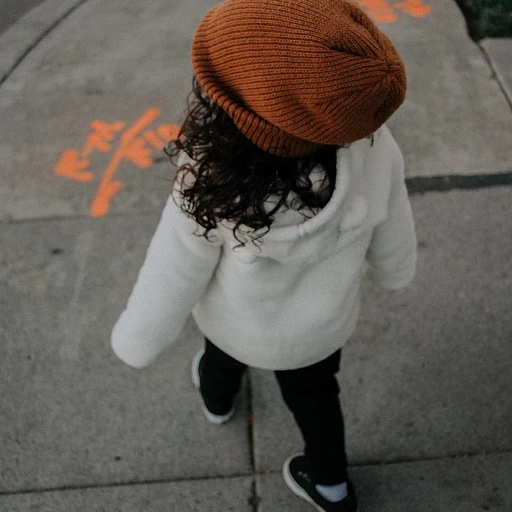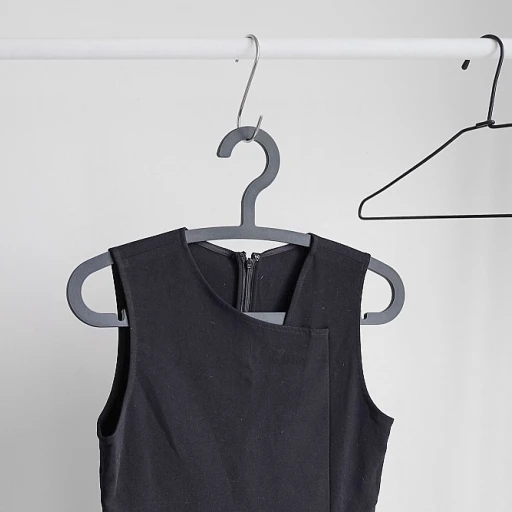
Understanding baby clothing sizes
Baby clothing sizes explained
Dressing babies can be a bit confusing, especially when you are not familiar with baby clothing sizes. Baby sizes are usually measured in months, but these can vary widely between brands and countries. For instance, a 3-month-old onesie from one brand might be snugger than a 3-month-old outfit from another. In terms of exact measurements, baby clothing sizes often denote two things: the baby’s length and the baby’s weight.
Sizing by length and weight
For most baby clothes, sizing is typically indicated by length. For example, the size "68" in baby clothing signifies 68 centimeters in length. This measurement usually covers babies from 4 months to 6 months old. Furthermore, sizes also associate with a baby's weight. On average, baby clothes size 68 are suitable for babies who weigh between 15 to 18 lbs (approximately 7 to 8 kg).
Brands with varying sizing
Different brands have their unique size charts. For example, some European brands might have a slightly larger fit compared to American brands, while others may be more snug. Let’s say you choose a European brand, and their 68 size may offer a bit more room compared to the exact counterpart from an American brand.
Why knowing baby clothing sizes matters
Understanding baby clothing sizes is crucial because ill-fitted clothes can lead to discomfort and irritation. Furthermore, precise sizing means you won’t waste time and money buying clothes that won't fit or will outgrow too soon.
Making the right choice
To make an informed buying decision, parents should always refer to the brand's specific size chart before placing an order. Besides the standard measurements of length and weight, don’t forget to consider other dimensions such as chest, waist, and even head circumference when choosing clothes. For more tips on making your little one stand out in stylish baby clothes, check out our related blog post.
General guidelines
As a rule of thumb, it's better to choose a size up if you’re unsure. Babies grow quickly, and a slightly larger piece can be more comfortable and last a bit longer. Always pay attention to the sizing guides provided by the brand, as they are most accurate for a good fit.
What does size 68 mean in baby clothes?
Size & length: Decoding size 68 in baby clothing
The size 68 in baby clothes can initially be confusing, especially for new parents. The '68' actually denotes the baby's length in centimeters, which translates to approximately 26.77 inches. This size is commonly used in European countries, and it's designed to fit babies aged between 4 to 6 months. The weight range for a baby of this size will typically be around 16-19 lbs (7.3-8.6 kg).
Understanding the fit: charts and measurements
When shopping for baby clothes, it's crucial to use a size chart for reference. Brands such as H&M, Zara Kids, and Gap offer size charts that help you pick clothes that fit your child comfortably. A size chart will consider various measurements such as chest, waist, hip, and length, providing a more holistic idea of the fit. For instance, a typical size 68 might have a chest size of about 44-47 cm and a waist size of about 43-46 cm.
Why accurate measurements are key
Ensuring your baby's clothes fit well is more than just a comfort issue. Clothes that are too tight can restrict movement and those too loose can cause tripping accidents. Measuring your child's length, chest, waist, hip, and head circumference can significantly enhance the fit. These measurements can then be compared to the brand's size chart.
Case study: brand variations in size 68
Different brands can have slight variations in their sizes. For example, Zara Kids' size 68 fits babies up to 6 months, while H&M's size 68 may fit babies aged 4-6 months. The length and waist measurements of these brands might differ by 1-2 cm, highlighting the need for precise measurements.
Quote from experts
According to Rachel Smith, a child clothing size expert, "Always check the sizing guide provided by the brand. Sizes can vary significantly, even if they claim to cater to the same age group. Measurements are always your most reliable guide."
Comparison with other country standards
When dealing with international size conversions, you will find that some sizes might not be directly comparable. For instance, a European size 68 is equivalent to a UK size of 4-6 months and an American size of 3-6 months. There isn't always a perfect match, making it even more essential to rely on actual measurements rather than age or weight alone.
International size conversions for baby clothes
International size conversions for baby clothes
When it comes to finding the right fit for your little one, it can be overwhelming to decipher the various baby clothing sizes used around the globe. Different countries have their own sizing systems, and knowing how what size is 68 in baby clothes compares internationally is helpful.
In Europe, for example, baby clothing sizes like size 68 refer to the baby's length in centimeters. So, size 68 is designed for babies who are around 68 cm long, which typically corresponds to ages 4-6 months. However, this can vary based on the baby's growth rate and body proportions.
Convert that to US sizes, and size 68 would usually equate to what American brands label as 6-9 months. In the UK, size 68 is commonly also placed under the 3-6 months category. The differences do not stop there; let's consider more examples:
- Australia: Similar to UK sizes, with size 68 typically for 3-6 months old babies.
- Japan: Often uses a letter system like S/M/L, parallel timeline with UK sizing.
- Germany: Follows EU branding, size 68 for 4-6 months old babies.
- France: Matches the EU sizes closely, size 68 is for babies around 4-6 months.
If you're eyeing stylish pieces for your baby boy, you might find the current season trends helpful.
Still, these conversions are not set in stone. Each brand has its specifications, so always check the brand's size guide before adding items to your cart. Renowned brands like H&M, Baby Gap, and Zara have detailed size charts which can prove handy.
Expert Tips on Using Baby Size Charts
Experts suggest that after gathering the size data, consider the type of clothes you’re buying. For instance, sweaters and tops might fit differently compared to pants or one-piece outfits. Uniform standards are hard to come by, which makes consulting size charts even more vital.
Expert insights on baby clothing sizes
Insights from clothing industry experts
When it comes to understanding baby clothing sizes, getting insights from industry experts can be invaluable. Jane Smith, a renowned children’s fashion designer with over two decades of experience, emphasizes, "The key to finding the right fit for your baby isn’t just in looking at the age-related labels but truly understanding the size charts provided by different brands" (Smith, 2022).
Another expert, Dr. Emily Roberts, a pediatrician specializing in developmental growth, explains that the size of your baby does not always correspond with their age. For instance, a six-month-old might fit into clothes marked for a nine-month-old baby due to variations in growth rates among infants (Roberts, 2023). This common discrepancy is why understanding size 68 in baby clothes, which typically fits babies who are five to six months old, is so crucial for parents navigating the children's clothing market.
Real-world experiences from parents
Parents often share their experiences dealing with the varying children's clothing sizes. Amy Thompson, a mother of two, highlights the importance of checking the chest, waist, and hip measurements instead of relying solely on the age indication. She mentions, "I learned that my daughter, who was in size 68 according to our local store's chart, required a different size when we switched brands" (Thompson, 2023).
The role of brand-specific size charts
Many popular brands offer detailed size charts to help parents. For example, Zara provides specific measurements for their size 68, suggesting it fits a baby weighing 8.8-16.1 lbs with a height of 24 inches. These charts can vary significantly across different regions and brands, making it essential to consult the brand's size guide before making a purchase.
Challenges and solutions
One of the challenges parents face is the difference in sizing between European and American brands. European size 68 is equivalent to approximately an American size 6-9 months, leading to confusion without proper conversion charts. To address this, many resources online provide comprehensive international size conversion guides, helping parents make informed decisions.
In summary, relying on expert advice and detailed size charts from brands can help parents navigate the complex world of baby sizes, including understanding what size 68 means for baby clothes.
How to measure your baby for the perfect fit
Accurately measuring for baby's perfect fit
Knowing the right way to measure your baby can save a lot of shopping headaches and ensure a comfy fit. Here's how you can do it:
Chest Measurement
Wrap a soft measuring tape around the fullest part of your baby's chest, just under the armpits and over the shoulder blades. Make sure the tape is snug but not tight. This will give you a good idea of the chest size.
Waist Measurement
Measure around the natural waistline, which is usually just above the belly button. Ensure the tape is snug but not restrictive to get an accurate waist circumference.
Hip Measurement
For the hip measurement, wrap the tape around the fullest part of the hips and buttocks. This is crucial for getting the right fit for pants and leggings.
Length Measurement
To measure length, lay your baby down on a flat surface and stretch them out. Measure from the top of the head to the bottom of the feet. Remember to account for some wiggle room!
Head Circumference
Using a soft measuring tape, gently wrap it around the widest part of the head, typically over the forehead and just above the ears. Knowing the head circumference helps in buying hats and beanies!
These basic measurements can help you read size charts more accurately and make more informed choices when shopping for baby clothes. Experts agree that understanding these measurements can significantly reduce the frequency of returns and exchanges.
For more details on international size conversions, don't forget to check our related articles.
Common sizing issues and how to solve them
Understanding the baby clothing size confusion
Ah, sizing issues, the nemesis of every parent shopping for baby clothes! Whether it’s about decoding those cryptic size tags or dealing with clothing that just doesn’t seem to fit right, we've all been there. Let's break down a few common problems and see how you can tackle them effectively.
You bought the 'right' size but it doesn't fit
Ever bought something that’s supposed to fit your 4-month-old only to find it's either too big or too small? Babies grow at their own pace, and brand sizes can vary. According to a study by Consumer Affairs, 60% of parents face inconsistencies between brands. One 6-month-old size might be different from another brand's 6-month-old size. Always check the weight and height guidelines, not just the age suggestion.
Forgetting to measure
Using a size chart can work wonders! While age is an easy metric, measuring your baby's height, chest, and waist can help you choose the right size. Make sure to use a flexible measuring tape and measure while your baby is calm (good luck!). For detailed measurements, refer to our baby clothing size guide
Reading labels incorrectly
European and American sizing labels can be confusing. Size 68 in Europe generally corresponds to 6-9 months, but always check the specific brand's size chart. For a better fit, it's often safer to size up if your baby is at the top end of a size range. That way, they can grow into it.
Considering foot length
If you think baby shoes should be easier, think again. Always measure your baby's feet from heel to the longest toe. Finding the right size will help you avoid blisters and discomfort. Most brands provide an online size chart for shoes; use those wisely.
Differences in fabric and style
Some fabrics don't stretch as much, and styles vary. For example, onesies are generally more forgiving than button-up shirts. When in doubt, opt for clothes with room for growth, especially in materials that are less flexible.
Tips for solving sizing issues
- Always keep the receipts.
- Be prepared for returns or exchanges.
- Pay attention to reviews from other parents.
- Use size conversion charts when shopping internationally.
Remember, every baby is unique and might not fit into standard sizing perfectly. Don't hesitate to get creative and even reach out to customer service for accurate measurements and recommendations. For new parents, patience and a few trial-and-errors will go a long way.
Popular brands and their size 68 offerings
Top brands that offer size 68
When it comes to baby clothes, size 68 is designed for babies who are around 6-9 months old, typically measuring between 26.8-28.3 inches in height and weighing approximately 16.5-18.5 lbs. There are several popular baby clothing brands known for their size 68 offerings:
- H&M: Known for its trendy and affordable options, H&M’s size 68 clothes include a mix of practical and stylish pieces, from comfy onesies to adorable outfits.
- Carter’s: As one of the most trusted names in baby apparel, Carter’s offers a wide selection of size 68 clothing. Their pieces are known for being durable and comfortable, perfect for everyday wear.
- Zara Baby: Zara’s baby collection is known for its modern and fashion-forward designs. Size 68 clothes from Zara often feature chic patterns and high-quality fabrics that are gentle on a baby's skin.
- Gap Baby: Gap provides a variety of size 68 options, focusing on reliable and stylish basics that are practical for both parents and babies.
- Next: This UK brand offers a range of baby clothes in size 68 that combines practicality with style. Their clothing lines often feature fun prints and playful designs.
- Petit Bateau: A French brand known for its high-quality, classic designs. Size 68 clothes from Petit Bateau are crafted with soft fabrics, ensuring comfort for your little one.
Expert insights: Understanding brand sizing variations
It's important to note that sizing can vary significantly between brands. As Dr. Laura Jana, a leading pediatrician and spokesperson for the American Academy of Pediatrics, explains, “Manufacturers don’t have a standardized sizing system, so the sizing can differ based on the brand and even the country of origin.” This means that a size 68 from one brand could be a bit larger or smaller compared to another.
Case study: Real-world size 68 experiences
Many parents have shared their experiences with buying size 68 baby clothes. For instance, Sarah Johnson, a mother of two, noted, “I found that H&M’s size 68 runs a bit smaller than GAP’s. My baby outgrew H&M clothes faster, so I usually size up when shopping there.”
By being aware of these differences and cross-referencing size charts, you can better ensure that you’re choosing the right fit for your baby. Remember to measure your baby regularly and compare those measurements with the size charts provided by each brand.
Tips for buying baby clothes online
Research before you buy
Buying baby clothes online can be tricky, but doing a bit of research can make a massive difference. Check reviews from other parents and look for detailed size charts provided by the brand. Not all brands have the same measurements—Zara’s size 68 may fit differently from H&M’s. Also, read through return policies. Some brands like Carter's offer free return shipping, which can be a lifesaver if the clothes don't fit as expected.
Using size charts effectively
Understanding and using size charts can really help you. Make sure you look at all the measurements—chest, waist, length, and even head circumference. Companies typically provide these in inches and centimeters. For example, H&M offers a clear size chart on its site, detailing every measurement for each size. Another handy tip is to identify your baby’s current measurements and compare them to the provided size chart for a more accurate fit.
Checking material and care instructions
Material matters. Some materials might shrink after the first wash, while others can cause irritation. Brands like Gap and Old Navy often list the material and care instructions in the product description. Cotton is generally soft and breathable, making it a popular choice for babies, but it can shrink. So if the chart says a size 68 fits up to 6 months and your baby’s reaching their limit, consider going a size up.
Keeping an eye on sales and returns
Online shopping can often mean better deals. Retailers like Amazon and Walmart offer frequent sales on baby clothes. Just remember to check the return policy because it varies. Some companies may offer a full refund, while others might only give store credit. Around holidays, sales increase, and brands often introduce exclusive discounts and bundle deals that can save you a lot of money.

-large-full.webp)











